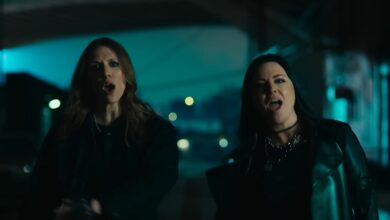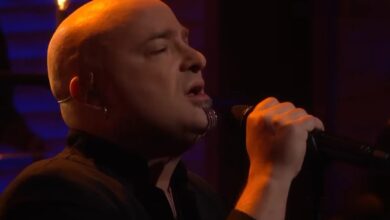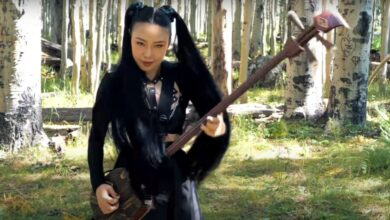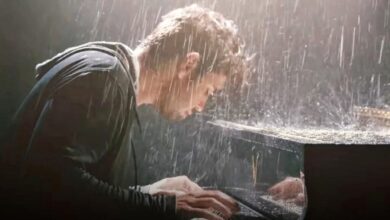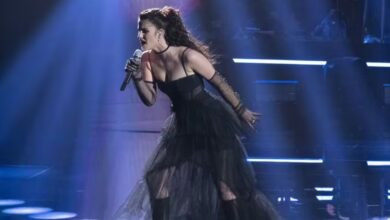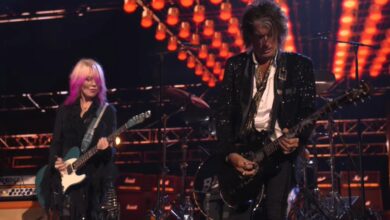Erik Grönwall’s “House of the Rising Sun (Epic Dark Version)” — how a classic found a new, thunderous heartbeat
On paper, “House of the Rising Sun” seems an unlikely candidate for a heavy, gothic reimagining in 2024. Yet Erik Grönwall, former frontman of Skid Row and H.E.A.T, proved otherwise. His “Epic Dark Version” of the 1964 classic surprised not only rock fans but also listeners who thought they had heard every possible interpretation. Instead of rushing into power vocals or flashy instrumentation, Grönwall let the atmosphere build slowly, using shadows and silence as much as sound. When the arrangement finally erupted, it transformed a folk ballad into a cinematic metal confession.
The song’s history is already legendary. Immortalized by The Animals in 1964, “House of the Rising Sun” became an anthem of rock’s first wave, recorded in one take and ascending the charts worldwide. Dozens of covers have followed, but few dared to step as far from the folk roots as Grönwall did. His choice was not to mimic Eric Burdon’s gravelly delivery but to recast the tune as a haunting epic, one that feels as if it belongs in a gothic cathedral rather than a smoky bar.
Grönwall’s personal journey gives the performance extra weight. In 2021 he was diagnosed with acute leukemia, underwent a bone marrow transplant, and battled his way back to health. Against all odds, he returned to the stage with Skid Row, only to step back in 2024 due to the risks of a weakened immune system. His comeback as a solo artist has therefore carried an aura of resilience. In “House of the Rising Sun,” you can hear that history between the lines—restraint in the quiet parts, strength saved for the explosive peaks.
When the video dropped, it spread like wildfire online. Posted on his official YouTube channel, the performance was quickly shared across platforms, racking up millions of views. Fans who expected another familiar cover found themselves immersed in something closer to a movie score. Reaction videos and vocal coaches praised the patience of the build, the careful phrasing, and the controlled use of his upper register. The consensus was clear: this wasn’t just a cover, it was an event.
The arrangement is key to its impact. The song opens with piano and faint atmospherics, drawing the listener into a shadowed space. Grönwall enters almost in a whisper, narrating rather than belting, making the tale of ruin and regret feel intimate. Gradually, layers of sound join—low drones, percussion that rumbles like distant thunder, and eventually guitars that crash in not as decoration but as judgment. Each step feels inevitable, as if the song itself demanded to grow.
His vocal delivery is striking. Known for his clarity under pressure, Grönwall resists the temptation to go full throttle too early. He emphasizes consonants, tells the story line by line, and only unleashes his upper register when the lyrics demand a cry of despair. By delaying the climax, he gives it much greater impact. When the final choruses hit, they feel earned, like a storm that has been building all along.
The metal energy is present not just in guitars but in the weight of the mix. The production feels vast, each instrument carefully placed to create depth. Rather than cluttering the track, the arrangement allows silence and echoes to do as much work as distortion. The result is less a straightforward rock version than a cinematic, gothic reimagining. It’s heavy, but also grand and solemn, like a requiem.
Reception was overwhelming. Comments flooded in from listeners across generations, with many calling it the “best version ever.” Hyperbole is common online, but here it reflected genuine surprise. Even fans of The Animals admitted they were impressed by how the dark, modern setting revealed new depths in the lyrics. The praise crossed genres too, pulling in metalheads, rock fans, and even pop listeners curious about the buzz.
Part of the magic lies in how the performance reframes the lyric. “House of the Rising Sun” is a tale of vice and downfall, told from the perspective of someone ruined by choices. Grönwall doesn’t treat it as a nostalgic lament; he makes it sound like prophecy. The spacious arrangement and his measured delivery turn the words into warnings echoing through time. The song feels less like memory and more like judgment delivered from a pulpit.
There is also the resonance of his health journey. Knowing that Grönwall fought through illness makes the restraint and control of the performance even more meaningful. He doesn’t waste a breath, doesn’t oversing, and doesn’t use his voice carelessly. Instead, he invests every line with precision, as if each phrase has to justify its existence. That awareness of limits paradoxically gives the song even more power.
The lineage is also important. The Animals’ version was itself a radical reinterpretation of a folk standard, proving that the song could evolve without losing its essence. Grönwall is continuing that tradition. By treating reinterpretation as a responsibility rather than a stunt, he honors the song’s history while giving it a new life for modern audiences. His approach shows that classics stay alive not through preservation alone, but through bold, respectful transformation.
The numbers back it up. The video sits among his channel’s most-watched content, rivaling his takes on other difficult songs like “All By Myself” and “I Will Always Love You.” These aren’t novelty covers—they’re carefully structured showcases of delayed gratification. In an online world where many singers rush to impress within seconds, Grönwall proves that patience still wins.
Media attention followed, with guitarists, producers, and vocal coaches dissecting the performance. Musicians praised the way he layered dynamics, held back his power, and saved the release for the final minutes. Even skeptics admitted the arrangement felt earned rather than gimmicky. The fact that such a diverse range of musicians and listeners agreed on its strength shows just how widely it resonated.
If there is a single defining moment, it comes in the final chorus. As the guitars surge and the arrangement swells, Grönwall leans slightly behind the beat, stretching the tension before releasing it. The effect is haunting, giving the final lines the gravity of a last confession. It is a small, subtle choice, but it transforms the ending into something unforgettable.
Ultimately, Grönwall’s “House of the Rising Sun” does not replace The Animals’ version or erase the folk roots. Instead, it converses with them, adding a new chapter to the song’s long history. It is proof that even the most familiar classics can feel dangerous and alive again when treated with imagination and care. For many listeners, it was more than a cover—it was a revelation.
